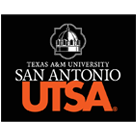Document Types
Individual Presentation
Start Date
2-23-2024 4:40 PM
End Date
2-23-2024 5:00 PM
Abstract
Raising Critical Language and Cultural Awareness through the Arts: A Call for the Inclusion of Creativity in the Spanish Heritage Language Curriculum.
Article 9th of the World Declaration on Higher Education for the Twenty-First Century (UNESCO), proposes critical thinking and creativity as a model of knowledge and experimentation still not explored enough in higher education. Responding to this statement, and framed within Beaudrie’s and Wilson's (2022) instructional goals for teaching Spanish as heritage language (SHL), the goal of this presentation, based on the author’s previous work, is to show the benefits of incorporating the arts and creativityas an approach to raising critical language and cultural awareness in Latina/o/e students, and as means to connect them with their “Cultura y Corazón” (Manzo et al. 2020), the core of their ethnolinguistic identity. The theoretical basis for this work assumes creativity as a multidimensional meaning-making process (Glaveanu et al. 2019) that emerges not at the individual level but within social and collaborative contexts(Csikszentmihalyi, 2006; Clapp, 2016). Therefore, bringing into the SHL classroom the arts—in particular, those coming from the Spanish-speaking world (poetry, visual arts, music, popular culture)—provides students with historical background, cultural models, community connections, resources, and symbolic affordances that they can further apply and repurpose in creative assignments to contest linguistic ideologies as they give meaning to their new and critical understandings of their language practices, culture(s), communities and ethnolinguistic identity. Examples of creative activities and students’ art projects will be provided.
References
Beaudrie, S., & Wilson, D. (2021). Reimagining the Goals of HL Pedagogy through Critical Language Awareness. In S.Loza & S. Beaudrie (ed.). Heritage Language Teaching Critical Language Awareness Perspectives for Research and Pedagogy. Routledge. 63-79.
Clapp, E.P. (2017). Participatory Creativity. Introducing Access and Equity to the Creative Classroom. Routledge.
Csikszentmihalyi, M. (2014). The Systems Model of Creativity. The Collected Works of Mihaly Csikszentmihalyi. Springer.
Glaveanu et al. (2019). Advancing Creativity Theory and Research: A Socio-cultural Manifesto. Commentary. Journal of Creative Behavior.54, (3): 741-745.
Manzo, R.D., Brazil-Cruz, L., Flores, Y.G., Rivera-Lopez, H. (2020). Cultura y Corazón: A Decolonial Methodology for Community Engaged Research. The Arizona University Press.
Recommended Citation
Parra, Maria Luisa, "Raising Critical Language and Cultural Awareness through the Arts: A Call for the Inclusion of Creativity in the Spanish Heritage Language Curriculum" (2024). 11th National Symposium on Spanish as a Heritage Language. 22.
https://digitalcommons.tamusa.edu/heritage_spanish/SCHEDULE/Friday/22
Included in
Digital Humanities Commons, Feminist, Gender, and Sexuality Studies Commons, Language Interpretation and Translation Commons, Latin American Languages and Societies Commons, Spanish and Portuguese Language and Literature Commons
Raising Critical Language and Cultural Awareness through the Arts: A Call for the Inclusion of Creativity in the Spanish Heritage Language Curriculum
Raising Critical Language and Cultural Awareness through the Arts: A Call for the Inclusion of Creativity in the Spanish Heritage Language Curriculum.
Article 9th of the World Declaration on Higher Education for the Twenty-First Century (UNESCO), proposes critical thinking and creativity as a model of knowledge and experimentation still not explored enough in higher education. Responding to this statement, and framed within Beaudrie’s and Wilson's (2022) instructional goals for teaching Spanish as heritage language (SHL), the goal of this presentation, based on the author’s previous work, is to show the benefits of incorporating the arts and creativityas an approach to raising critical language and cultural awareness in Latina/o/e students, and as means to connect them with their “Cultura y Corazón” (Manzo et al. 2020), the core of their ethnolinguistic identity. The theoretical basis for this work assumes creativity as a multidimensional meaning-making process (Glaveanu et al. 2019) that emerges not at the individual level but within social and collaborative contexts(Csikszentmihalyi, 2006; Clapp, 2016). Therefore, bringing into the SHL classroom the arts—in particular, those coming from the Spanish-speaking world (poetry, visual arts, music, popular culture)—provides students with historical background, cultural models, community connections, resources, and symbolic affordances that they can further apply and repurpose in creative assignments to contest linguistic ideologies as they give meaning to their new and critical understandings of their language practices, culture(s), communities and ethnolinguistic identity. Examples of creative activities and students’ art projects will be provided.
References
Beaudrie, S., & Wilson, D. (2021). Reimagining the Goals of HL Pedagogy through Critical Language Awareness. In S.Loza & S. Beaudrie (ed.). Heritage Language Teaching Critical Language Awareness Perspectives for Research and Pedagogy. Routledge. 63-79.
Clapp, E.P. (2017). Participatory Creativity. Introducing Access and Equity to the Creative Classroom. Routledge.
Csikszentmihalyi, M. (2014). The Systems Model of Creativity. The Collected Works of Mihaly Csikszentmihalyi. Springer.
Glaveanu et al. (2019). Advancing Creativity Theory and Research: A Socio-cultural Manifesto. Commentary. Journal of Creative Behavior.54, (3): 741-745.

